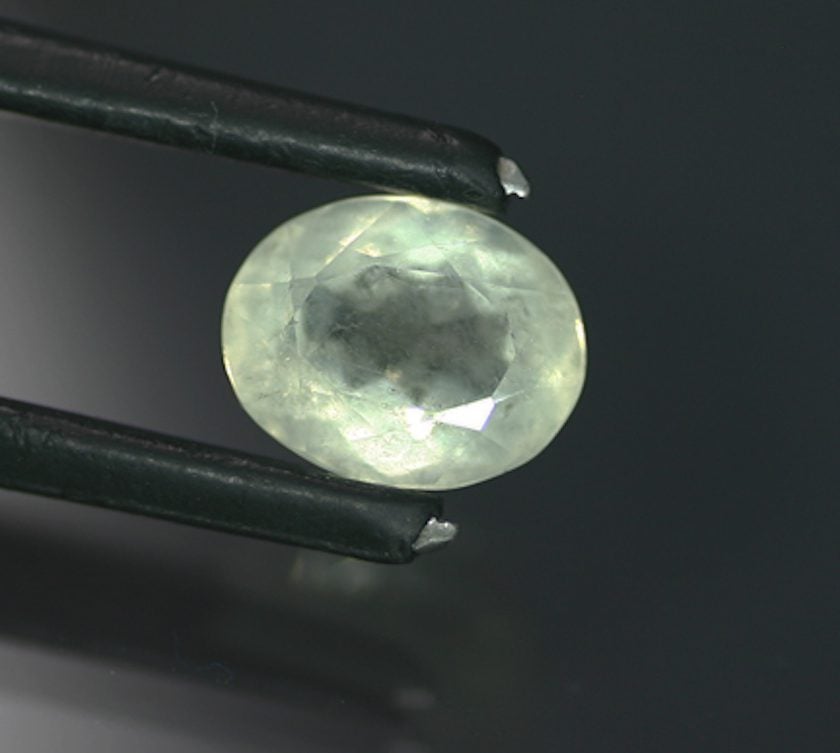Milarite Value, Price, and Jewelry Information
Very rare milarite crystals can occur in green and yellow colors. Transparent material can yield small but pleasant looking faceted gems for collectors.
1 Minute Read
Very rare milarite crystals can occur in green and yellow colors. Transparent material can yield small but pleasant looking faceted gems for collectors.
Start an IGS Membership today
for full access to our price guide (updated monthly).Milarite Value
What is Milarite?
Milarite belongs to the mineral group named after it. Sometimes called the osumilite group, this group also includes sugilite and other rarely faceted minerals, such as laurentthomasite, poudretteite, and sogdianite.
Does Milarite Make a Good Jewelry Stone?
With a hardness of 5.5 to 6 and no cleavage, milarites could make suitable jewelry stones if worn with protective settings. However, you're more likely to find them — if at all — in mineral collections than jewelry collections.
Identifying Milarites
Milarite was originally known as a green mineral, until fine yellow crystals were discovered in Mexico in 1968.
Some milarites may luminesce. Shortwave (SW) ultraviolet (UV) light may cause bluish white or greenish white fluorescence and phosphorescence, while longwave (LW) UV light may cause medium chalky green fluorescence and weak phosphorescence.
Are There Synthetic Milarites?
There are no known synthetic milarites and no known treatments or enhancements for these gemstones.
Where are Milarites Found?
Guanajuato, Mexico produces yellow and yellow-green gem-quality crystals on matrix, and some larger Mexican crystals have transparent areas suitable for cutting.
Minas Gerais, Brazil and Tsumeb and the Erongo region in Namibia have also yielded small, facetable material.
Other notable crystal sources include the following locations:
- St. Gotthard, Switzerland: green crystals.
- China; Spain; New Hampshire, United States.
Stone Sizes
Crystals can occur up to about four cm across, but facetable areas in such crystals are very small. Thus, stones over one carat could be considered large for the species.
How to Care for Milarite Gems
Stay on the safe side and refrain from cleaning these rare gems in mechanical systems. Instead, use a soft brush, mild detergent, and warm water. Consult our gemstone jewelry care guide for more recommendations.
Milarite rough and cut set (crystal: 1.4 x 1.3 x 1.3 cm; emerald-cut gem: 1.38 cts), Jaguaracu, Minas Gerais, Brazil. © Rob Lavinsky, www.iRocks.com. Used with permission.
Joel E. Arem, Ph.D., FGA
Dr. Joel E. Arem has more than 60 years of experience in the world of gems and minerals. After obtaining his Ph.D. in Mineralogy from Harvard University, he has published numerous books that are still among the most widely used references and guidebooks on crystals, gems and minerals in the world.
Co-founder and President of numerous organizations, Dr. Arem has enjoyed a lifelong career in mineralogy and gemology. He has been a Smithsonian scientist and Curator, a consultant to many well-known companies and institutions, and a prolific author and speaker. Although his main activities have been as a gem cutter and dealer, his focus has always been education. joelarem.com
International Gem Society
Related Articles
Black Diamond Value, Price, and Jewelry Information
Chameleon Diamond Value, Price, and Jewelry Information
Gray Diamond Value, Price, and Jewelry Information
Green Diamond Value, Price, and Jewelry Information
Latest Articles
Opal Buying Guide
Amethyst Sources Around the World: The Geological Story Behind These Purple Gemstones
Brazilianite Value, Price, and Jewelry Information
Ruby-Glass Composites vs Leaded Glass Clarity Enhancements
Never Stop Learning
When you join the IGS community, you get trusted diamond & gemstone information when you need it.
Get Gemology Insights
Get started with the International Gem Society’s free guide to gemstone identification. Join our weekly newsletter & get a free copy of the Gem ID Checklist!
